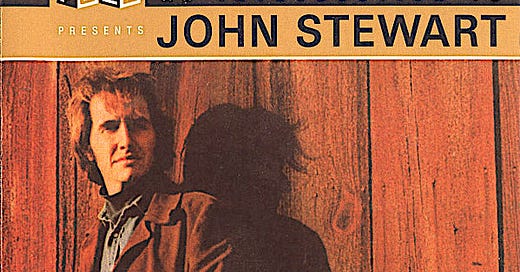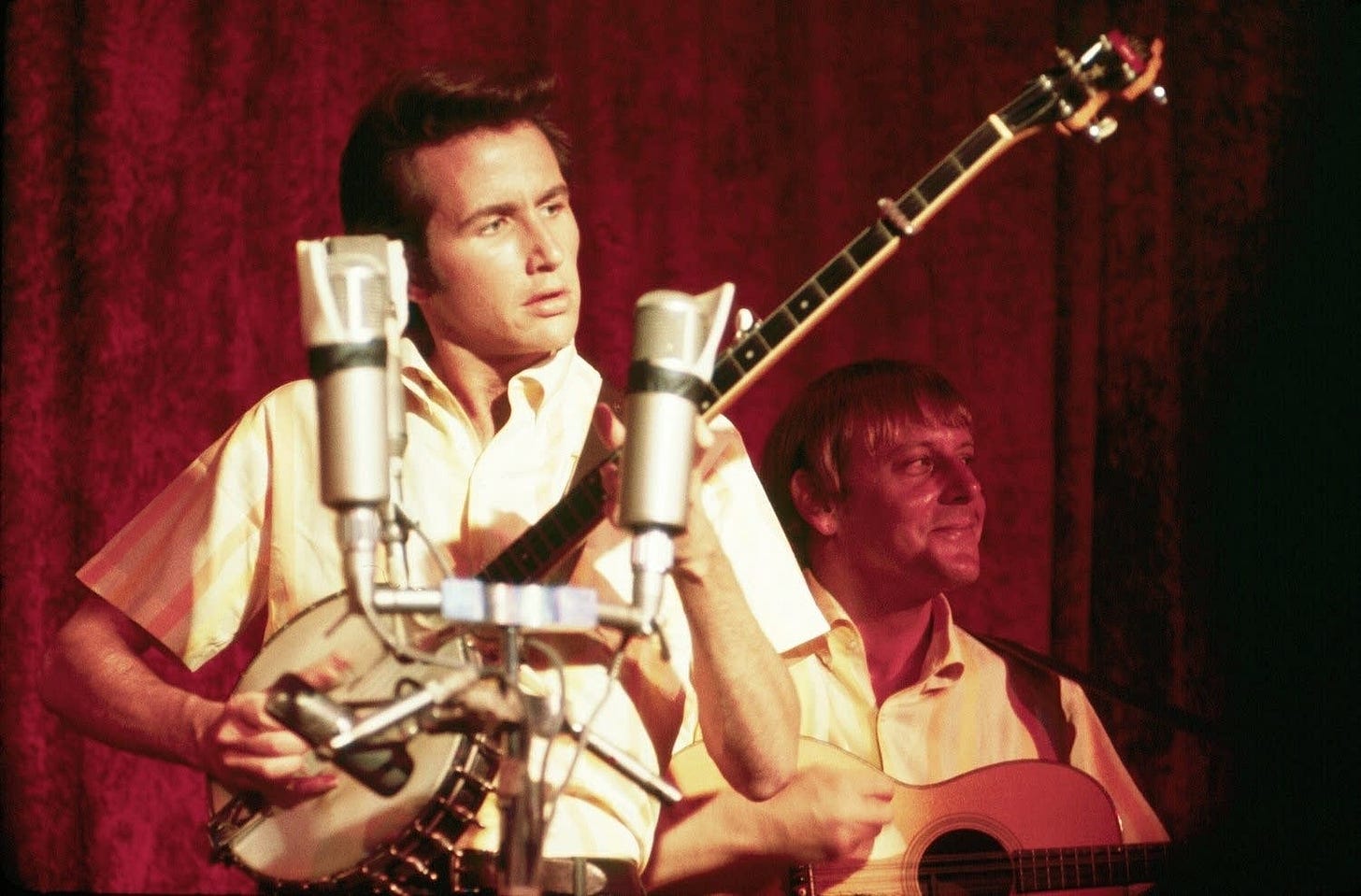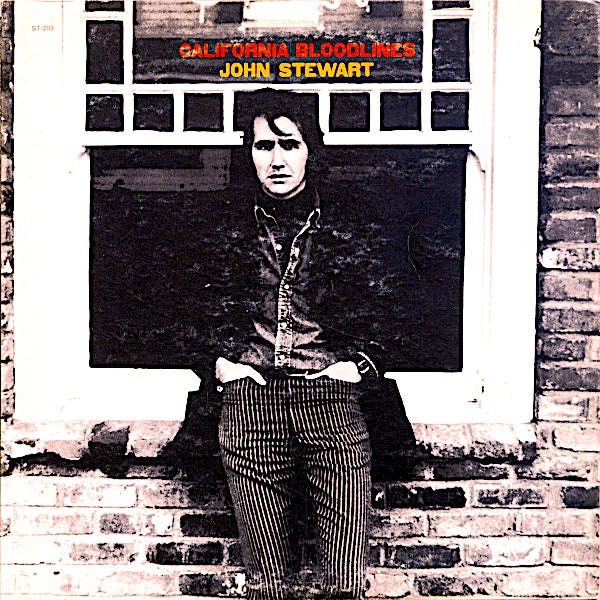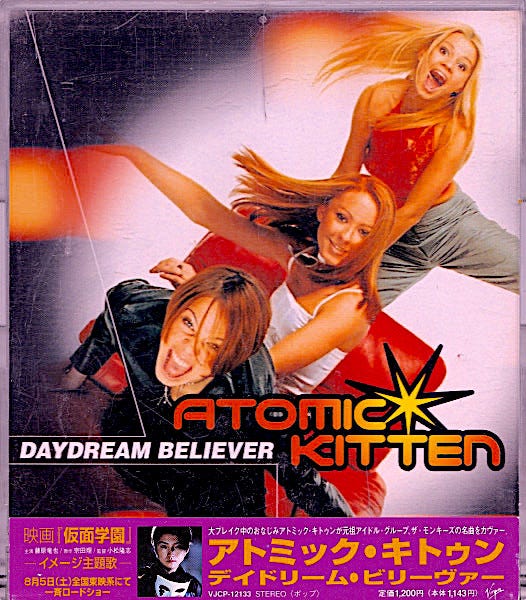John Stewart: Daydream Your Way to Gold
Birthday salute to an enduringly great American singer-songwriter
The enchantments of the California sound are embodied in the music of guitarist/banjoist and singer-songwriter John Stewart (1939-2008). He was a child of the SoCal post-World War Two era and a disciple of cowboy songs, garage bands, Buddy Holly, and Elvis Presley.
Today John is commended for his contributions to the 1960s American folk music movement while he was with The Kingston Trio (from 1961-67), whose mix of calypso, folk, pop, and comedy was commercially successful while opening the door for new acts like Bob Dylan, Gordon Lightfoot, and others. John is also know as an adjunct to Fleetwood Mac and Buckingham/Nicks, who were part of John’s 1979 career resurgance with the Top 10 hit “Gold.”
John’s solo catalogue included four dozen albums, notably the landmark CALIFORNIA BLOODLINES LP.
He left us more than 600 recorded songs, covered by artists including Joan Baez, Roseanne Cash, Nanci Griffiths, and The Lovin’ Spoonful (“Never Goin’ Back”)—who performed on and produced this rare and remarkable 1967 Pat Boone track that John wrote:
However, it’s John’s eternally cheerful “Daydream Believer” that has sold millions and gone to Number One many times—not bad for a song nobody wanted. Written in 1966 as a deep cut for The Kingston Trio, the song was circulated then rejected by Spanky & Our Gang, then We Five. Then it wound its way to The Monkees, then being produced by John’s friend, Chip Douglas, who tacked it on as “album filler” during the summer-1967 sessions for the PISCES AQUARIUS CAPRICORN & JONES album. Davy Jones was imposed upon to sing it in the midst of an already-frenzied Monkees workload. Like a good soldier he did it, though you can hear the agitation in his vocal. Then the track was set aside for unclear reasons—an afterthought.
All four Monkees worked on the track: Davy on lead vocals + percussion, Micky Dolenz on harmony vocals + percussion, Michael Nesmith on electric guitar (doing cool harmonics), and Peter Tork on piano—Peter created the opening piano signature that made the song pop. The orchestral arrangement (by noted jazz trumpeter and composer, Shorty Rogers, and performed with The Wrecking Crew) intentionally quoted the seven-note phrase from “Help Me Rhonda” (Beach Boys) that preceeds the chorus. The arrangement also owes a bit to “Penny Lane” (Beatles).
RCA Victor (Monkees parent record label) did not like the lyrics as John had written them. The RCA wags insisted on changing a critical word. John had written "Now you know how funky I can be,” (funky = “smelly" or “of low esteem”), but it was changed to "Now you know how happy I can be." John balked but had faith it would be a hit and he capitulated. It was believed that an RCA minion (or Douglas) penciled in the change, but Davy claimed he was the one with the pencil, telling me and many others, “There was no way I was going to sing ‘funky.’ In the 60s, that was nearly a swear word. I was supposed to be a ‘fresh face’ for the kids.” Davy also couldn’t read the handwritten lyric sheet in the studio, misreading the line “shaving razor’s old” as “shaving razor’s cold”. “Daydream Believer” was released as a single in October 1967, and it became a surprise hit in time for Christmas
.
According to John, “Daydream Believer” was supposed to be part three in “a trilogy of songs about suburban life. Married couples start out in an idealistic haze, but after a few years it wears off, and each sees the other as they really are. This is when genuine love is proven.” He could also have been referencing his wife, Buffy Stewart, who he met in 1968 as John toured on Robert F, Kennedy’s ill-fated presidential campaign. Years later, as Buffy told me, the “homecoming queen” in the lyric referred to her. Buffy recorded her version in 2010 with Davy Jones singing counterpoint and Peter Tork playing banjo (I attended this recording session)
(released 2013).
John never complained about the royalties generated by “Daydream Believer,” saying “it (didn't just) pay the rent. It kept me alive all these years.” He later wrote a sequel-of-sorts, “She Believes,” which Davy recorded in 1986 for his (under-rated) INCREDIBLE album:
"Daydream Believer" has gone on to become a standard for “sunshine pop” and a chart hit for artists over decades (a Monkees remix re-charted in 1986). It has been covered scores of times in eclectic styles, including a punk version by Japanese band Shonen Knife:
I calculated that, in his life, Davy must’ve sung it live upwards to 10,000 times. In shows, he stuck to the common arrangement, though I heard him do it country style:
and we performed it several times with symphony orchestras at pops concerts:
In 2000, Davy and I released a techno-dance version of it, which got some dance-club play in Russia and Scandanavia, and that same year the British band Atomic Kitten released a spacey techno pop cover of it (produced by OMD)
.
Of the many stories he could tell about the song, one he liked was when he and Mick Fleetwood did it together “in the middle of winter at some gig near the Arctic Circle. There he was bangin’ away with his mouth hangin’ open. Heavy man.”
Between the music and the words, “Daydream Believer” encourages people to feel more easeful about life and to nurture your dreams, big or small. Here’s a revealing live version from 2010:
Meanwhile, Happy Heavenly Birthday and thank you John for your gifts of song and talent.
#johnstewart #buffystewart #davyjones #monkees #petertork #daydreambeliever #fleetwoodmac #mickfleetwood #johnnyjblair #birthday









